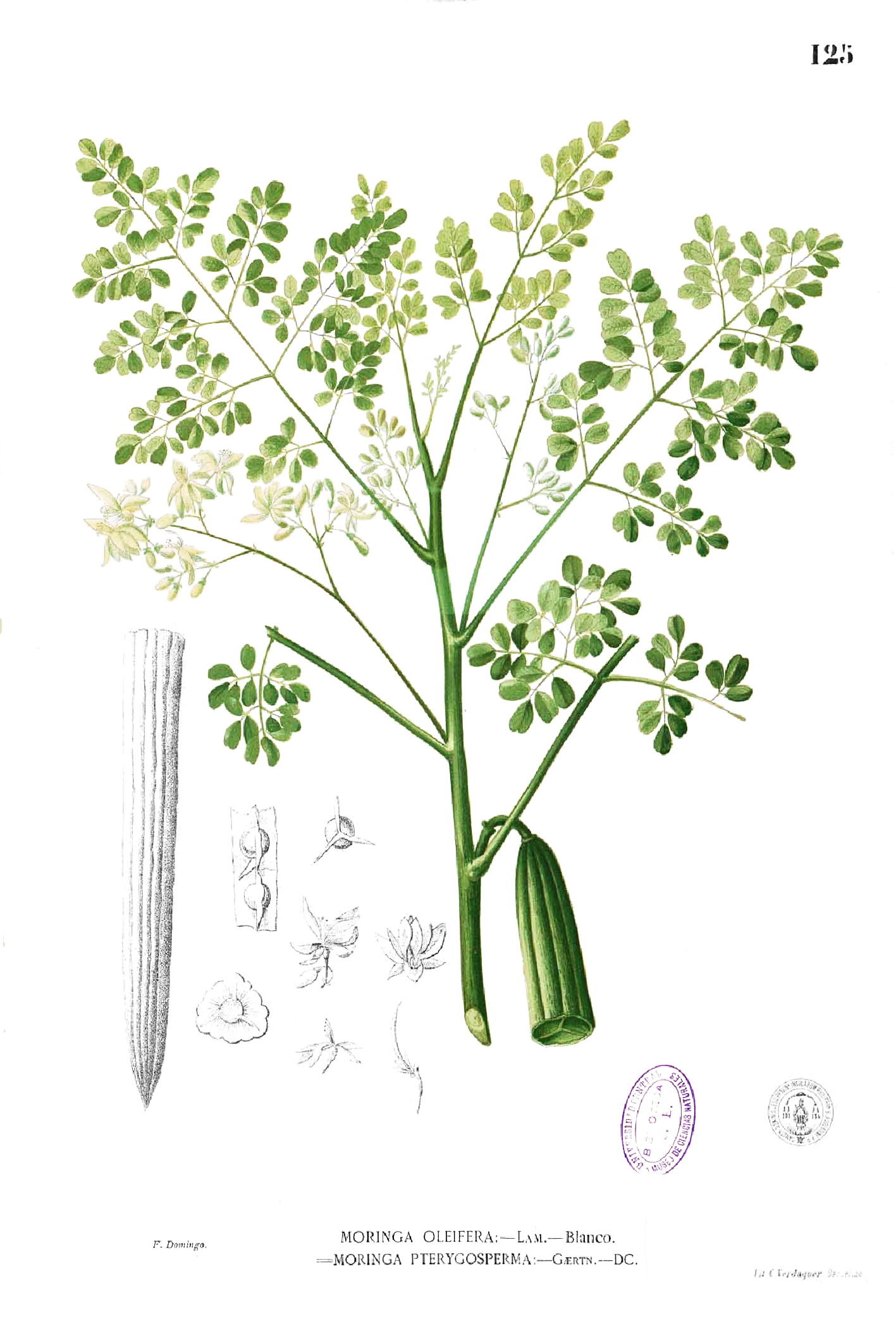Guest Post: Edrick Hypolite

Moringa Oleifera is the commonly grown species of the bigger genus known as Moringa in English. It is also common to hear it being referred to as Drumstick Tree. This plant grows in arid and semi-arid areas due to its drought-resistant nature. Moringa is naturally found in plenty in the lower slopes of the Himalayas in Northwest of India. It is also grown domestically in tropical and subtropical regions where it is used as a vegetable, water purifier, and as a source of medicine for a variety of human diseases and conditions.
Regions Where Moringa Has Historically been used as a Relief to Malnutrition
Africa- the majority of African countries are facing drought that leaves the population without access to adequate food. Given that most of the people are poor and cannot afford commercial foods; wild and natural alternatives such as Moringa have been used to stave off starvation. In Africa, the leaves are the most widely eaten parts since they are viewed just like the other common domestic vegetables.
Asia- countries like Cambodia, India, Philippines and Sri Lanka rely on Moringa for food during dry seasons.
Moringa Oleifera in Malnutrition Treatment
Moringa has been used as a source of food from ancient times and still finds greater use among communities that grow it. Both in the past and present, Moringa trees have been used to combat malnutrition in areas that suffer rainfall shortage. Thanks to its drought resistance, the plant can sprout and grow to maturity in climates where other forms of food crops cannot survive. The drumstick tree has been a source of relief for infants and lactating mothers who would have otherwise died of starvation.
No less than five global NGOs have ascertained the plant’s nutritional value and acts as a versatile source of relief. It has been accurately established that Moringa leaves’ powder was and still continues to be used in dire situations of starvation.
Why Moringa Against Starvation?
In the tropical and subtropical climates, there is always scarce rainfall that can hardly support viable agricultural activities. In these climates, the Moringa tree can survive and even bring out maximum foliage during the dry season. This is when it comes out as a much-needed relief to the masses who cannot afford food from the market.
The Edible Parts of Moringa
The Moringa parts that are used for consumption include mature seeds, roots, leaves, oil from the mature seeds, and the immature pods commonly known as drumsticks.
How Moringa Treats Malnutrition
Moringa has been used successfully to boost the immunity of lactating mothers and infants thus evading the devastating end results of malnutrition. People facing hunger are at higher risks of getting diseases due to their potentially low immunity. In these cases, Moringa can be used as an alternative medicine. The fact that the plant contains nutrients and elements of antibiotics means that it is ideal for treating malnutrition, effectively.
Advantages of Moringa in Treating Malnutrition
●It is drought resistant and grows very fast.
●A tested and proven food source; even the U.N. featured it in the September 2014 agricultural showcase.
●It has numerous nutrients. It is a very rich source of vitamin A in addition to significant quantities of iron, proteins, magnesium, and zinc.
●The powder of dried moringa leaves is very nutritious to weaning infants who may be faced with starvation
●Moringa is rich in antioxidants.
How Moringa is Used in the U.S
The U.S. does not fall into the category of countries that are frequently hit by starvation, but the citizens still use Moringa for various purposes. In ancient American society, Moringa was used as a painkiller, drying agent and as a germ-killer. In modern medicine, much research has pointed to possibilities that Moringa can be used to cure anemia, rheumatism, and diabetes among other conditions. It is also thought to be an alternative relief to most fungal, viral and parasitic infections.
Ground into capsules, Moringa is also useful as a nutritional supplement. It is popular among vegans, athletes, and numerous others. It is also easy to find online retailers such as MoringaUSA that distribute Moringa Oleifera capsules.
Conclusion
There are not many better alternatives to evade the pangs of malnutrition in drought-stricken areas than Moringa. First, it is inexpensive and does not need the tending that is given to other food crops. It is very rich in terms of nutrients and has been proven to be safe for human consumption. The advantages of this plant are not just limited to combating malnutrition but has so many health benefits including the prevention of a couple of diseases where modern medicine has not succeeded. We can confidently say that Moringa has enormous potential to help address the effects of malnutrition and general food shortage.
About the author:
The writer, Edrick Hypolite, is always researching alternative treatments and remedies to make sure that he is always putting the best nutrients and supplements into his body. He also does this research in the hopes of finding solutions to world problems that have been largely ignored. If you wish to leran more about Edrick please visit on Google+.
© 2014 PostJoint Limited, All Rights Reserved
Disclaimer: Some posts are posted in exchange for compensation but do not imply endorsements
